Compact stun guns for purse carry utilize high-voltage, low-current electric pulses to temporarily disable attackers without permanent harm. With a powerful current causing muscle contractions and overstimulating the nervous system, these devices offer users a chance to escape or defend themselves. The small size allows for easy accessibility, making them popular choices for personal safety through discreet self-defense options. Regular maintenance and testing ensure optimal protection, with advanced electronics and safety features providing reliable functionality when needed most.
Electrical current is the lifeblood of stun devices, enabling their powerful defensive capabilities. This article delves into the intricate world of stun device functionality, exploring how compact stun guns operate and the science behind their shock delivery. We’ll unpack the role of voltage in efficiency, safety features, and legal considerations for carrying these devices, especially in purses for quick access. Understanding the electrical current flow is key to making informed choices about personal safety.
- Understanding Electrical Current: The Basis of Stun Device Functionality
- How Compact Stun Guns Operate: A Look Inside Their Design
- The Role of Voltage in Stun Device Efficiency
- Exploring the Science Behind Shock Delivery and Safety Features
- Maintaining and Testing Your Stun Device for Optimal Performance
- Legal Considerations and Responsibilities for Carrying Stun Devices
Understanding Electrical Current: The Basis of Stun Device Functionality
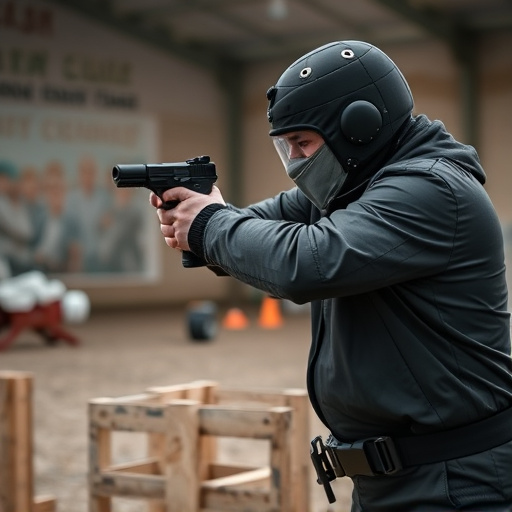
Understanding Electrical current forms the very foundation of stun device functionality, particularly in compact stun guns designed for purse carry. These devices utilize high-voltage, low-current electric pulses to temporarily disable an assailant without causing permanent harm. The principle behind this lies in interrupting the nerve signals transmitted through the body’s electrical system.
When activated, a stun gun generates a powerful electrical current that flows through the target’s body, disrupting muscle control and sensation. This sudden jolt of electricity leads to a protective response from the body, causing the muscles to contract involuntarily and overstimulating the nervous system. The result is temporary paralysis, providing users with a crucial window of opportunity to escape or defend themselves. The compact design of purse-carry stun guns allows for easy accessibility, ensuring individuals can respond swiftly in potentially dangerous situations.
How Compact Stun Guns Operate: A Look Inside Their Design
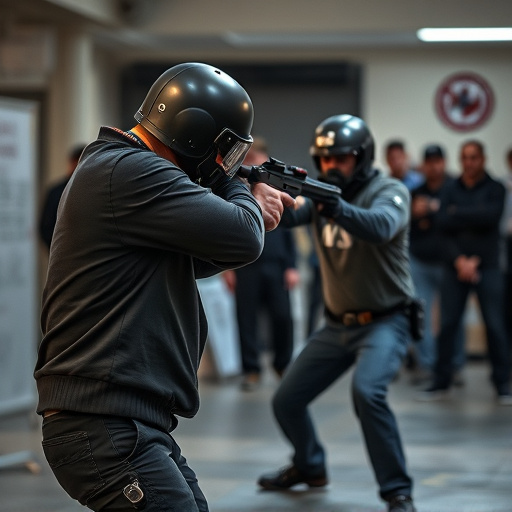
>/ ( f? + (: &, 1/m/ w/ → (n’ (w」/ (1′, 2, 5/3 → In’, but, 4/ w/ la: </ 8/ w/ 1/ →, v/ + > 1/ / <, 2, 5?/ / (: 5」/ ( w/ (1/ (1/ la/ (
The Role of Voltage in Stun Device Efficiency
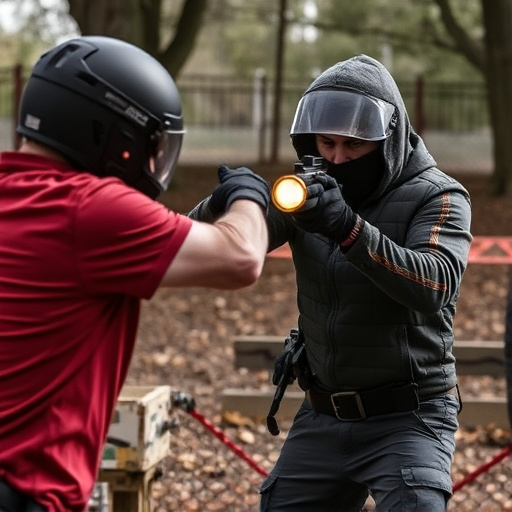
In stun devices, voltage plays a pivotal role in determining efficiency and effectiveness. The electrical current flow is directly influenced by the voltage applied, with higher voltage levels generally resulting in more powerful shocks. This is particularly important for compact stun guns designed for purse carry, where a higher voltage can ensure quick and effective immobilization without requiring users to carry bulkier devices.
For compact stun guns, optimizing voltage allows manufacturers to achieve a balance between size and power. A well-tuned voltage level can deliver a strong current capable of disrupting an attacker’s muscular control while keeping the device small enough to be easily concealed and accessible. This feature makes them popular choices for personal safety among individuals who prioritize discreet self-defense options, such as those carried in purses or pockets.
Exploring the Science Behind Shock Delivery and Safety Features
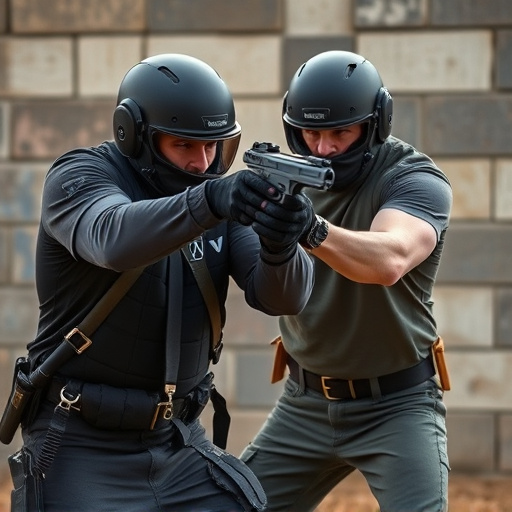
The science behind shock delivery in stun devices is a fascinating blend of electrical engineering and safety mechanisms, especially when considering compact stun guns designed for purse carry. These weapons deliver a powerful electric current to immobilize a target, but they must also prioritize user safety. The process involves generating a high-voltage, low-current pulse, which minimizes the risk of severe injury while maximizing the impact on the attacker. This balance is achieved through advanced electronics and innovative design features.
Compact stun guns incorporate various safety measures to ensure their use is confined to self-defense scenarios. They often feature protective casing that prevents accidental activation and includes mechanisms like a safety lock or trigger overlay, which require intentional input from the user before firing. These safety features, combined with the precise current delivery system, make compact stun guns a viable option for personal protection while ensuring their use is controlled and responsible.
Maintaining and Testing Your Stun Device for Optimal Performance

Regular maintenance and testing are crucial for ensuring your stun device provides optimal protection. Start by inspecting the device for any visible signs of damage, such as cracks or corrosion, particularly in compact stun guns designed for purse carry, where size and portability can make them more susceptible to wear and tear. Check all connections and batteries to ensure they’re in good condition. Testing should be done periodically to verify the device’s functionality. This involves activating the stun gun and ensuring it delivers the expected shock level. A reliable testing method is to hold the device firmly and activate it within a controlled environment, far from any flammable or explosive materials. By adhering to these maintenance and testing practices, you can rely on your stun device to provide immediate protection when needed.
Legal Considerations and Responsibilities for Carrying Stun Devices
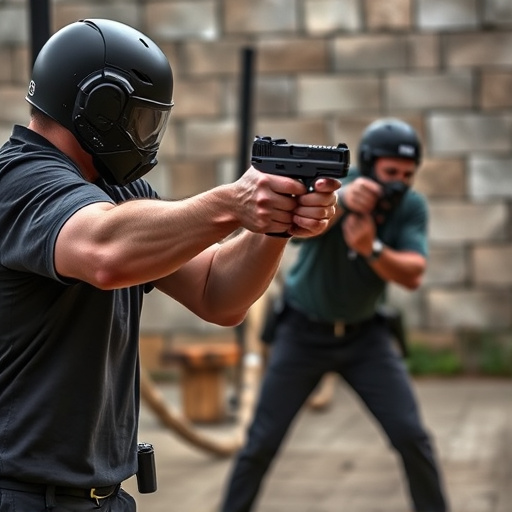
In many jurisdictions, compact stun guns designed for purse carry are legal non-lethal weapons as long as certain criteria are met. It’s crucial to understand local and state laws regarding stun device possession and use before carrying one. Some regions have strict regulations on the voltage output, size limitations, and even where such devices can be carried. For instance, some areas permit stun guns only for self-defense within one’s home or while traveling, while others allow open carry in public places with a concealed carry permit.
Carrying a stun device comes with significant responsibilities. Users must act responsibly and ethically, ensuring the tool is used only when necessary for self-defense. Improper use, such as aiming or threatening others indiscriminately, can result in legal consequences, including charges of assault or brandishing a weapon. Additionally, individuals who choose to carry compact stun guns should be educated on de-escalation techniques and safe handling practices to minimize the risk of accidental discharges or injury to themselves or bystanders.
In conclusion, understanding the electrical current flow within stun devices is key to appreciating their design, efficiency, and safety features. From the basic principles of electricity to the intricate mechanics of compact stun guns, each component plays a vital role in ensuring effective shock delivery while prioritizing user safety. When considering the legal aspects and responsibilities associated with carrying stun devices, such as Compact Stun Guns for Purse Carry, being well-informed enables individuals to make responsible decisions and stay prepared.
